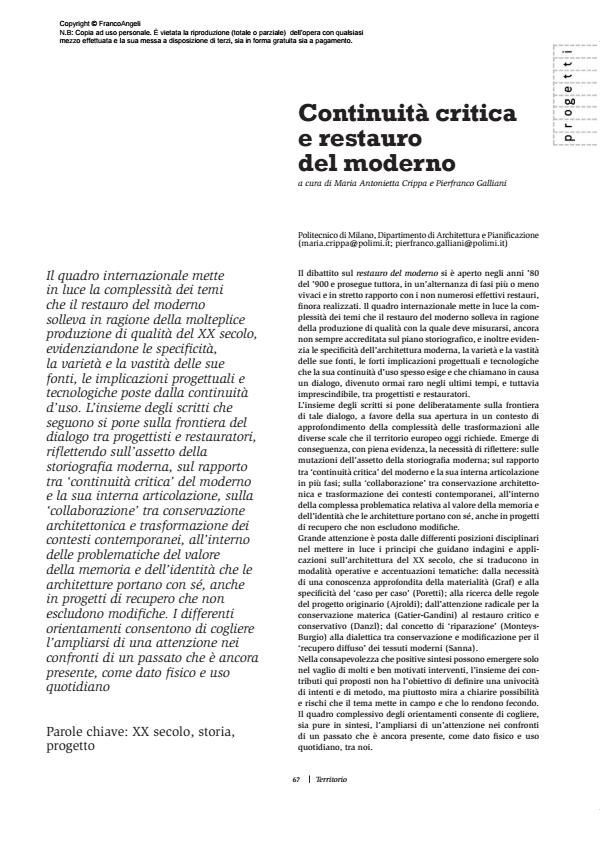Continuità critica e restauro del moderno
Titolo Rivista TERRITORIO
Autori/Curatori Pierfranco Galliani. A cura di Maria Antonietta Crippa
Anno di pubblicazione 2012 Fascicolo 2012/62 Lingua Italiano
Numero pagine 1 P. 67-67 Dimensione file 114 KB
DOI 10.3280/TR2012-062013
Il DOI è il codice a barre della proprietà intellettuale: per saperne di più
clicca qui
Qui sotto puoi vedere in anteprima la prima pagina di questo articolo.
Se questo articolo ti interessa, lo puoi acquistare (e scaricare in formato pdf) seguendo le facili indicazioni per acquistare il download credit. Acquista Download Credits per scaricare questo Articolo in formato PDF

FrancoAngeli è membro della Publishers International Linking Association, Inc (PILA)associazione indipendente e non profit per facilitare (attraverso i servizi tecnologici implementati da CrossRef.org) l’accesso degli studiosi ai contenuti digitali nelle pubblicazioni professionali e scientifiche
The international framework highlights the complexity of the issues which modern restoration raises over the varied quality production of the 20th century, underlining its specificities, the variety and the vastness of its sources and the design and technological implications posed by continued use. The papers which follow lie on the borderline of the dialogue between designers and restorers, reflecting on the history of the modern, on the relationship between the ‘critical continuity’ of the modern and its internal organisation and on co-operation between architectural conservation and the transformation of contemporary contexts, within the issues of memory and identity which architecture involves, even in restoration projects which do not exclude modifications. The different orientations highlight the increased attention paid to a past that is still present as a physical fact and in everyday use.;
Keywords:20th century, history, design
- Il Velodromo Maspes-Vigorelli a Milano Andrea Di Franco, in TERRITORIO 69/2014 pp.66
DOI: 10.3280/TR2014-069010
Pierfranco Galliani. A cura di Maria Antonietta Crippa, Continuità critica e restauro del moderno in "TERRITORIO" 62/2012, pp 67-67, DOI: 10.3280/TR2012-062013